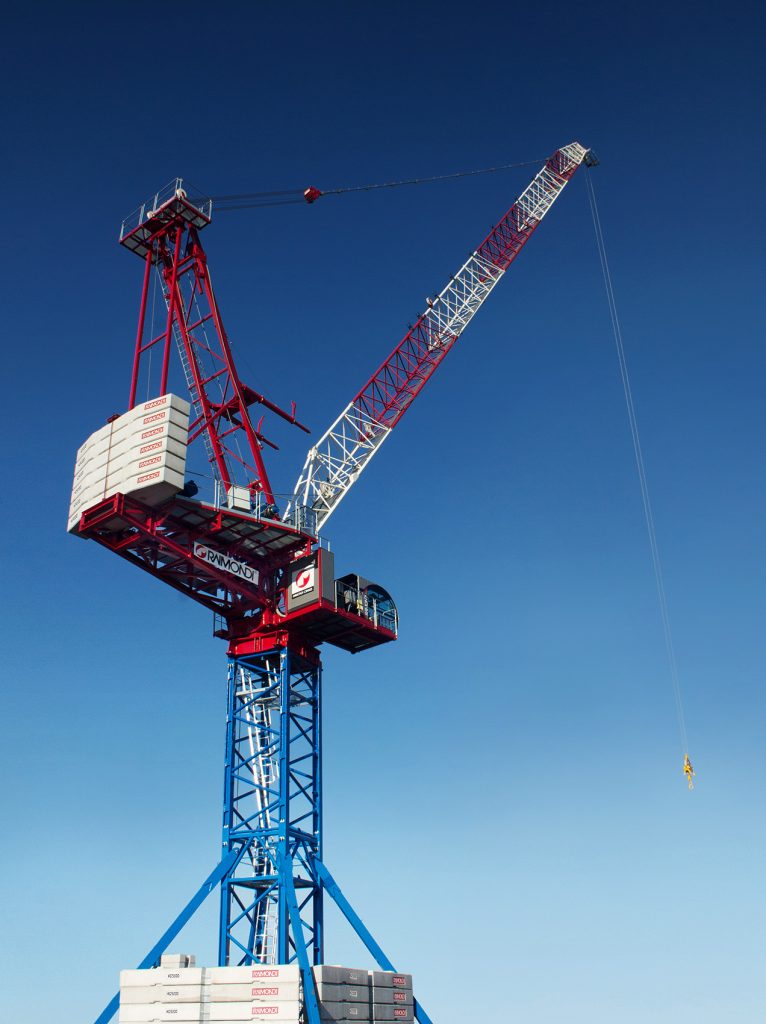Italian tower crane specialist Raimondi has launched a new luffing jib crane, LR330, which uses an equilateral triangular jib design described by the company as a “breakthrough that enhances several different aspects of the machine”.
Showcased to Raimondi’s exclusive agent network ahead of wider release, the LR330 luffing jib crane will officially begin shipping this month to fulfill agent pre-sale orders, and is now available for wider purchase, said the company.
“Raimondi has realised our value proposition through research, trials and finally, development. We’re proud to present a technologically advanced, superior performance luffing crane, fully European in manufacture, to the market,” said Domenico Ciano, technical director, Raimondi Cranes. “The LR330 is productive, durable, strong and efficient. As the flagship crane of the new luffing range, (it is) structurally optimised (and) this innovative layout allows for improved packaging and transportation, simplifies the construction phase, and reduces wind impact on the jib, thereby decreasing the out-of-service radius.”
The LR330 has a maximum jib length of 60m and a maximum capacity of 18t, with two falls and four falls configurations. At the maximum radius, it can lift 3.3t in Ultra-lift mode. Six different jib length configurations of 30-60m satisfy all needs in terms of specific jobsite configurations. Three different hoisting winches are available: standard installed power of 80kW or the two falls configuration with the more powerful 110kW, while the four falls configuration has an installed power of 80kW. The rope capacities are 650m, 1,000m and 980m respectively. All winches can be equipped with a secondary emergency brake.
The LR330 has been designed with ease of use in mind, according to Raimondi. Crane operators can control and tailor the machine’s work to their preferences, thereby reducing jobsite stressors. Together with the new Raimondi safety control system, there is a significant advancement in performance and control of the LR330’s three movements, said Ciano, adding that working at height has also been factored in with the crane’s simplified installation and dismantling procedures.
“Crane operators can now choose between three different configurations, enabling a change in parameters related to the movement speeds and dynamic. This functionality allows the operators to align the crane closer to their specific needs. Further, to reduce pressure on the operator and simultaneously increase the overall level of onsite safety, the safety control system’s installed sensors monitor all of the crane’s movements and monitor the load, supporting the operator as site hazards approach. Alerting the operator with alarms and direct intervention, the LR330 is both agile and intelligent,” explained Ciano, describing a few of the LR330’s operator-centric characteristics.”
